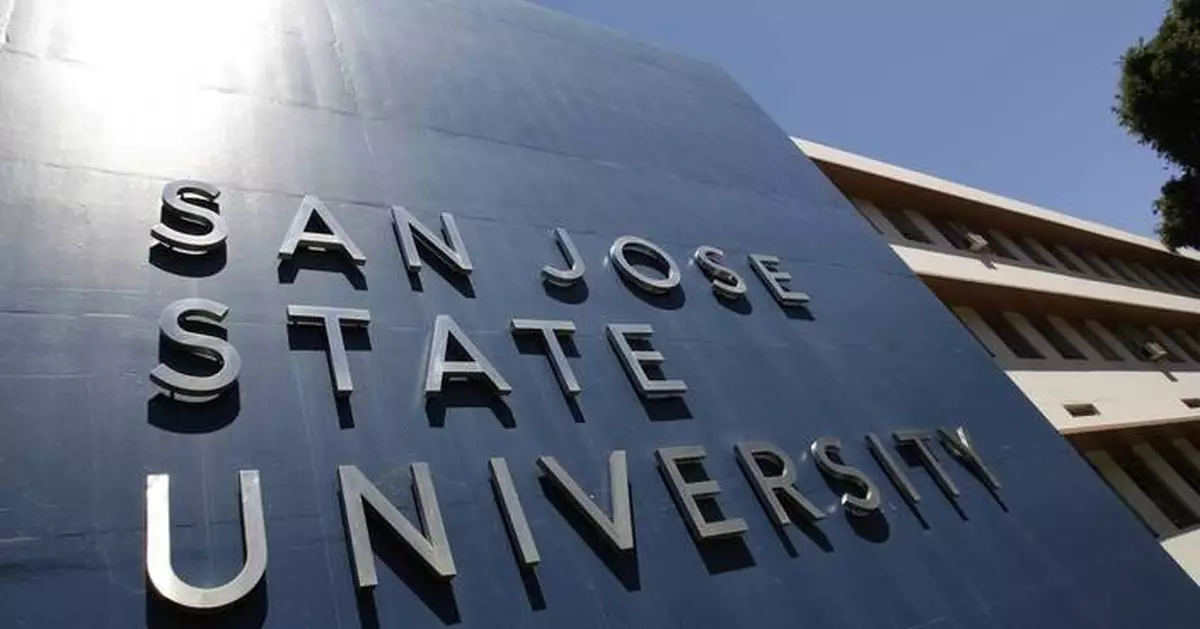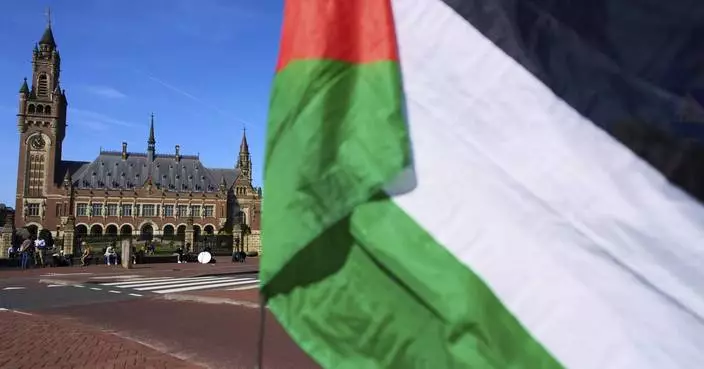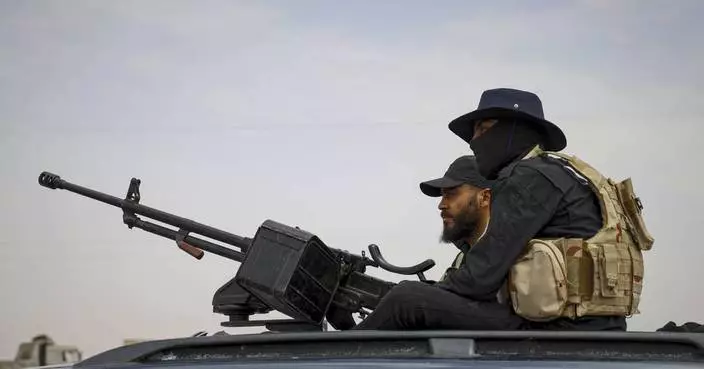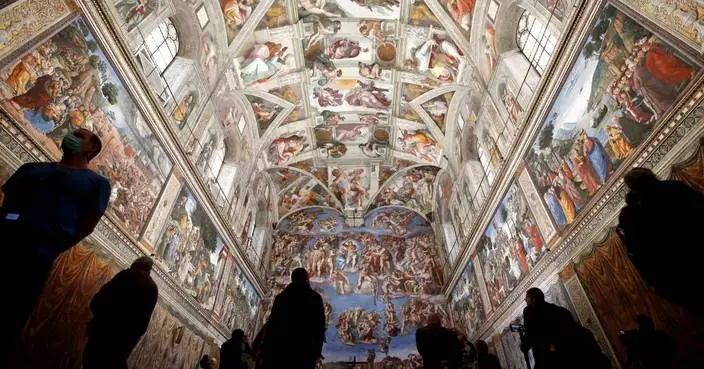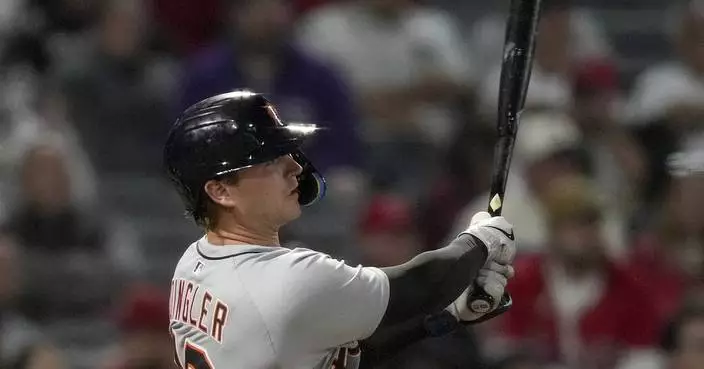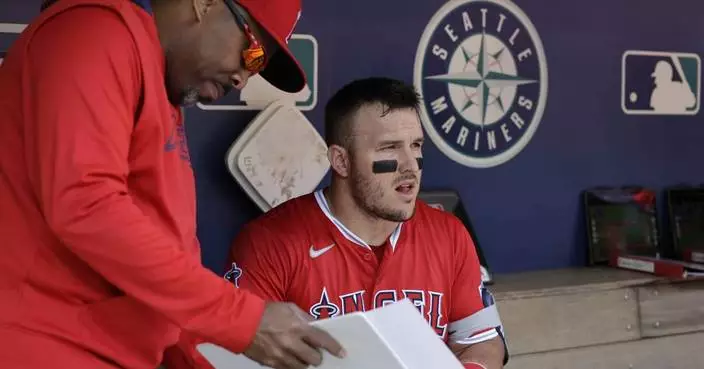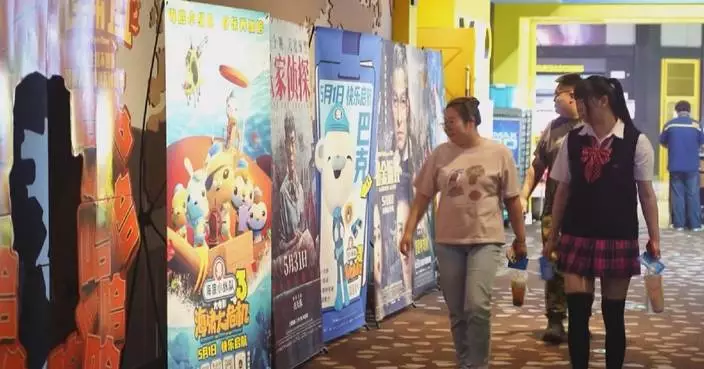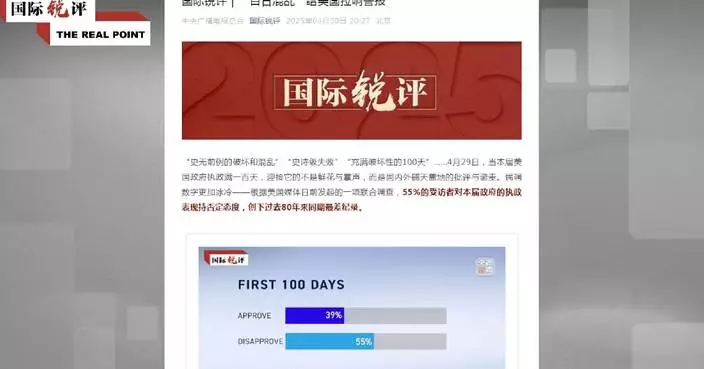WASHINGTON (AP) — The Trump administration is investigating potential civil rights violations at two universities and a high school sports league that allowed transgender athletes to compete on women's teams, the Education Department said Thursday.
The agency is opening reviews of San Jose State University volleyball, the University of Pennsylvania's swimming program and the Massachusetts Interscholastic Athletic Association.
It comes a day after President Donald Trump signed an executive order intended to ban transgender athletes from competing in girls’ and women’s sports. The order calls for penalties against schools and leagues, saying competing against transgender athletes deprives female students of equality.
“The previous administration trampled the rights of American women and girls — and ignored the indignities to which they were subjected in bathrooms and locker rooms — to promote a radical transgender ideology,” said Craig Trainor, the department's acting assistant secretary for civil rights.
The Education Department said it proactively opened the new cases over suspected violation of Title IX, a 1972 law barring sex discrimination in education. Opening an inquiry isn't meant to indicate a finding of wrongdoing, according to department policy. Additionally, the agency said it is reviewing athletics policies at a number of other schools.
It reflects the Education Department's shift in civil rights priorities as it aligns with Trump's agenda to target antisemitism and gender identity issues. The investigations also build on Trump’s anti-transgendercampaign rhetoric, which pledged to end “transgender insanity.”
Advocates for transgender students condemned the executive order Trump signed Wednesday.
“Contrary to what the president wants you to believe, trans students do not pose threats to sports, schools or this country, and they deserve the same opportunities as their peers to learn, play and grow up in safe environments,” said Fatima Goss Graves, CEO of the National Women’s Law Center.
Trump's executive order also prompted the NCAA to change its participation policy on Thursday, limiting competition in women's sports to athletes assigned female at birth only.
It's unusual for the Education Department to investigate past violations of new policy, or to investigate without first receiving a complaint. San Jose State is being scrutinized over a player's participation on the women's volleyball team. A lawsuit filed by players against the Mountain West Conference argued letting her compete poses a safety risk, but San Jose State has not confirmed it has a transgender woman volleyball player. The team's season ended Nov. 30.
University president Cynthia Teniente-Matson said San Jose State will fully engage with the investigation and comply with the law as it continues to “act within our authority to uphold the values that define us as an institution.”
The investigation at Penn focuses on Lia Thomas, who swam on the school’s women’s team and was the first openly transgender athlete to win a Division I title in 2022. Thomas graduated that year. Penn did not immediately provide comment.
According to the Education Department, the Massachusetts Interscholastic Athletic Association allowed a transgender athlete to compete on a girls' high school basketball team, prompting an opposing team to forfeit after three players were reportedly injured. The department did not identify the schools or give further details.
Athletic associations typically don't receive federal money from the Education Department, and it was not immediately clear what authority the agency had to investigate the Massachusetts league.
The department is taking exception with a policy in the association's handbook saying students “shall not be excluded from participation on a gender-specific sports team that is consistent with the student’s bona fide gender identity.”
The league invoked that policy last year after a girls' basketball team in Lynn forfeited a game against a team with a transgender athlete. Three players were reportedly injured during the game, and the team was already down four to begin with, according to local media reports.
The MIAA said it has historically complied with federal and state laws and is seeking legal guidance on its next steps. “We are especially interested in determining this investigation’s impact on teams currently playing the winter season and on our upcoming tournaments,” the association said in a statement.
Lawyers who advise schools on Title IX say the Trump administration is taking an unusually aggressive approach by initiating its own investigations. Bonnie Young, a partner at Fox Rothschild, said such investigations typically aren't publicized until they're concluded.
“The enforcement landscape is changing rapidly with the new Administration and the flurry of executive orders,” Young said in an email. “Each day reveals new and bolder enforcement actions to bring public and private entities into compliance with the Administration’s objectives.”
Title IX has been at the center of a political tug-of-war in recent years. Under former President Joe Biden, new federal rules expanded the law to protect transgender and LGBTQ+ students. A federal judge overturned Biden's rules this year, calling them an overstep.
The Trump administration has been using Title IX to push against schools that provide accommodations for transgender students. Last month the Education Department opened another investigation into Denver public schools after an all-gender restroom replaced a girl's restroom while leaving another exclusive to boys.
In his order, Trump directed federal agencies to “rescind all funds from educational programs that deprive women and girls of fair athletic opportunities.” The Education Department's Office for Civil Rights can move to cut federal money for institutions that violate civil rights, but only if it's approved by a judge and if the office fails to negotiate a resolution.
The Associated Press’ education coverage receives financial support from multiple private foundations. The AP is solely responsible for all content. Find the AP’s standards for working with philanthropies, a list of supporters and funded coverage areas at AP.org.
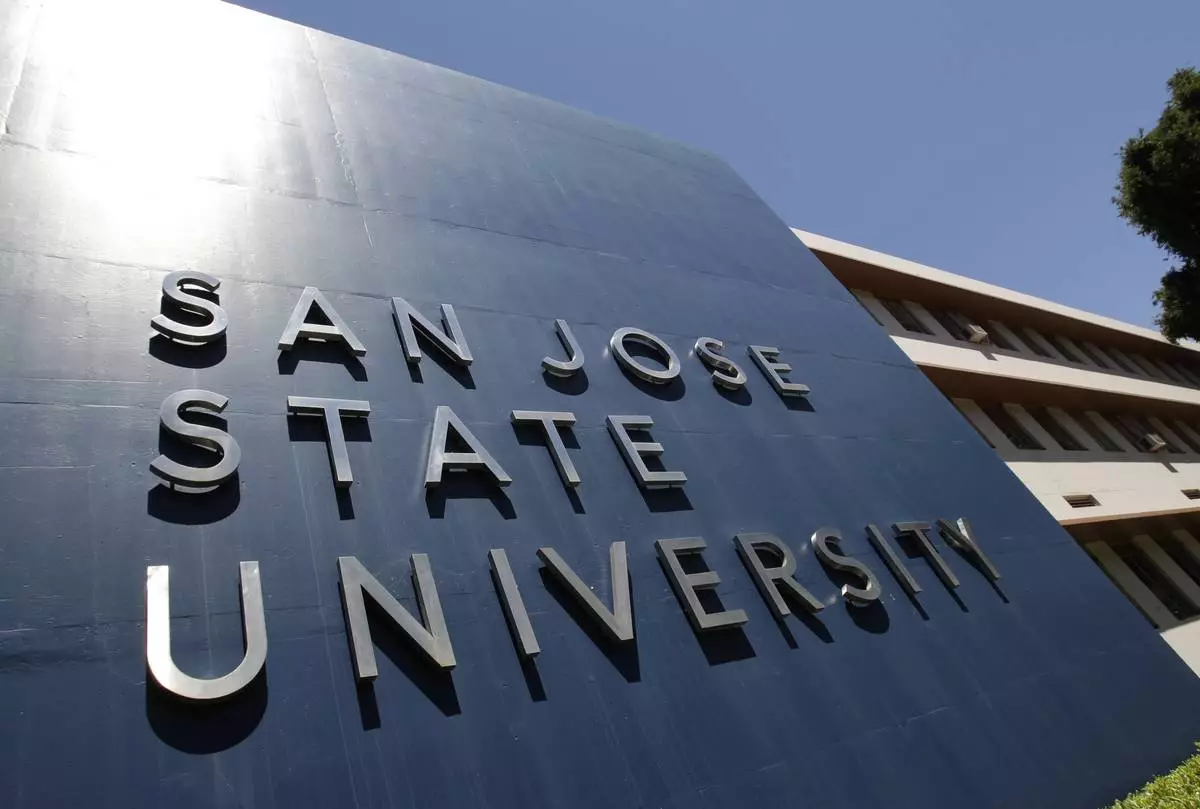
File - In this June 30, 2011 file photo is an exterior view of San Jose State University in San Jose, Calif. (AP Photo/Paul Sakuma, File)
VATICAN CITY (AP) — “Conclave,” the movie, may have introduced movie-goers to the spectacular ritual and drama of a modern conclave, but the periodic voting to elect a new pope has been going on for centuries and created a whole genre of historical trivia.
Here are some fun facts about conclaves past, derived from historical studies including Miles Pattenden's “Electing the Pope in Early Modern Italy, 1450–1700” and interviews with experts including Elena Cangiano, an archeologist at Viterbo's Palazzo dei Papi (Palace of the Popes).
In the 13th century, it took almost three years — 1,006 days to be exact — to choose Pope Clement IV's successor, making it the longest conclave in the Catholic Church’s history. It's also where the term conclave comes from — "under lock and key," because the cardinals who were meeting in Viterbo, north of Rome, took so long the town's frustrated citizens locked them in the room.
The secret vote that elected Pope Gregory X lasted from November 1268 to September 1271. It was the first example of a papal election by “compromise,” after a long struggle between supporters of two main geopolitical medieval factions — those faithful to the papacy and those supporting the Holy Roman Empire.
Gregory X was elected only after Viterbo residents tore the roof off the building where the prelates were staying and restricted their meals to bread and water to pressure them to come to a conclusion. Hoping to avoid a repeat, Gregory X decreed in 1274 that cardinals would only get “one meal a day” if the conclave stretched beyond three days, and only “bread, water and wine” if it went beyond eight. That restriction has been dropped.
Before 1274, there were times when a pope was elected the same day as the death of his predecessor. After that, however, the church decided to wait at least 10 days before the first vote. Later that was extended to 15 days to give all cardinals time to get to Rome. The quickest conclave observing the 10-day wait rule appears to have been the 1503 election of Pope Julius II, who was elected in just a few hours, according to Vatican historian Ambrogio Piazzoni. In more recent times, Pope Francis was elected in 2013 on the fifth ballot, Benedict XVI won in 2005 on the fourth and Pope Pius XII won on the third in 1939.
The first conclave held under Michelangelo's frescoed ceiling in the Sistine Chapel was in 1492. Since 1878, the world-renowned chapel has become the venue of all conclaves. “Everything is conducive to an awareness of the presence of God, in whose sight each person will one day be judged,” St. John Paul II wrote in his 1996 document regulating the conclave, “Universi Dominici Gregis.” The cardinals sleep a short distance away in the nearby Domus Santa Marta hotel or a nearby residence.
Most conclaves were held in Rome, with some taking place outside the Vatican walls. Four were held in the Pauline Chapel of the papal residence at the Quirinale Palace, while some 30 others were held in St. John Lateran Basilica, Santa Maria Sopra Minerva or other places in Rome. On 15 occasions they took place outside Rome and the Vatican altogether, including in Viterbo, Perugia, Arezzo and Venice in Italy, and Konstanz, Germany, and Lyon, France.
Between 1378-1417, referred to by historians as the Western Schism, there were rival claimants to the title of pope. The schism produced multiple papal contenders, the so-called antipopes, splitting the Catholic Church for nearly 40 years. The most prominent antipopes during the Western Schism were Clement VII, Benedict XIII, Alexander V, and John XXIII. The schism was ultimately resolved by the Council of Constance in 1417, which led to the election of Martin V, a universally accepted pontiff.
The cloistered nature of the conclave posed another challenge for cardinals: staying healthy. Before the Domus Santa Marta guest house was built in 1996, cardinal electors slept on cots in rooms connected to the Sistine Chapel. Conclaves in the 16th and 17th centuries were described as “disgusting” and “badly smelling,” with concern about disease outbreaks, particularly in summer, according to historian Miles Pattenden. “The cardinals simply had to have a more regular and comfortable way of living because they were old men, many of them with quite advanced disease,” Pattenden wrote. The enclosed space and lack of ventilation further aggravated these issues. Some of the electors left the conclave sick, often seriously.
Initially, papal elections weren’t as secretive, but concerns about political interference soared during the longest conclave in Viterbo. Gregory X decreed that cardinal electors should be locked in seclusion, “cum clave” (with a key), until a new pope was chosen. The purpose was to create a totally secluded environment where the cardinals could focus on their task, guided by God’s will, without any political interference or distractions. Over the centuries, various popes have modified and reinforced the rules surrounding the conclave, emphasizing the importance of secrecy.
Pope John XII was just 18 when he was elected in 955. The oldest popes were Pope Celestine III (elected in 1191) and Celestine V (elected in 1294) who were both nearly 85. Benedict XVI was 78 when he was elected in 2005.
There is no requirement that a pope be a cardinal, but that has been the case for centuries. The last time a pope was elected who wasn’t a cardinal was Urban VI in 1378. He was a monk and archbishop of Bari. While the Italians have had a stranglehold on the papacy over centuries, there have been many exceptions aside from John Paul II (Polish in 1978) and Benedict XVI (German in 2005) and Francis (Argentine in 2013). Alexander VI, elected in 1492, was Spanish; Gregory III, elected in 731, was Syrian; Adrian VI, elected in 1522, was from the Netherlands.
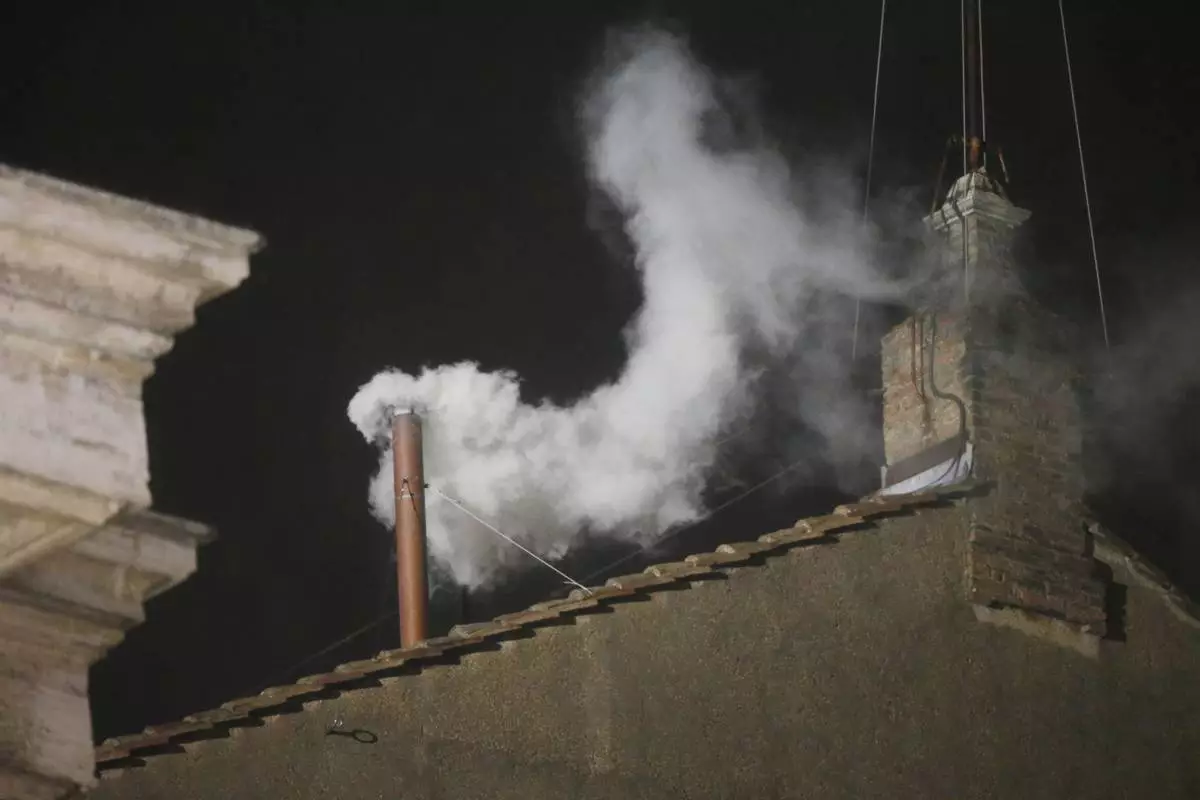
FILE - White smoke is seen billowing out from the chimney of the Sistine Chapel and announcing that a new pope has been elected on Wednesday, March 13, 2013. (AP Photo/Gregorio Borgia, File)
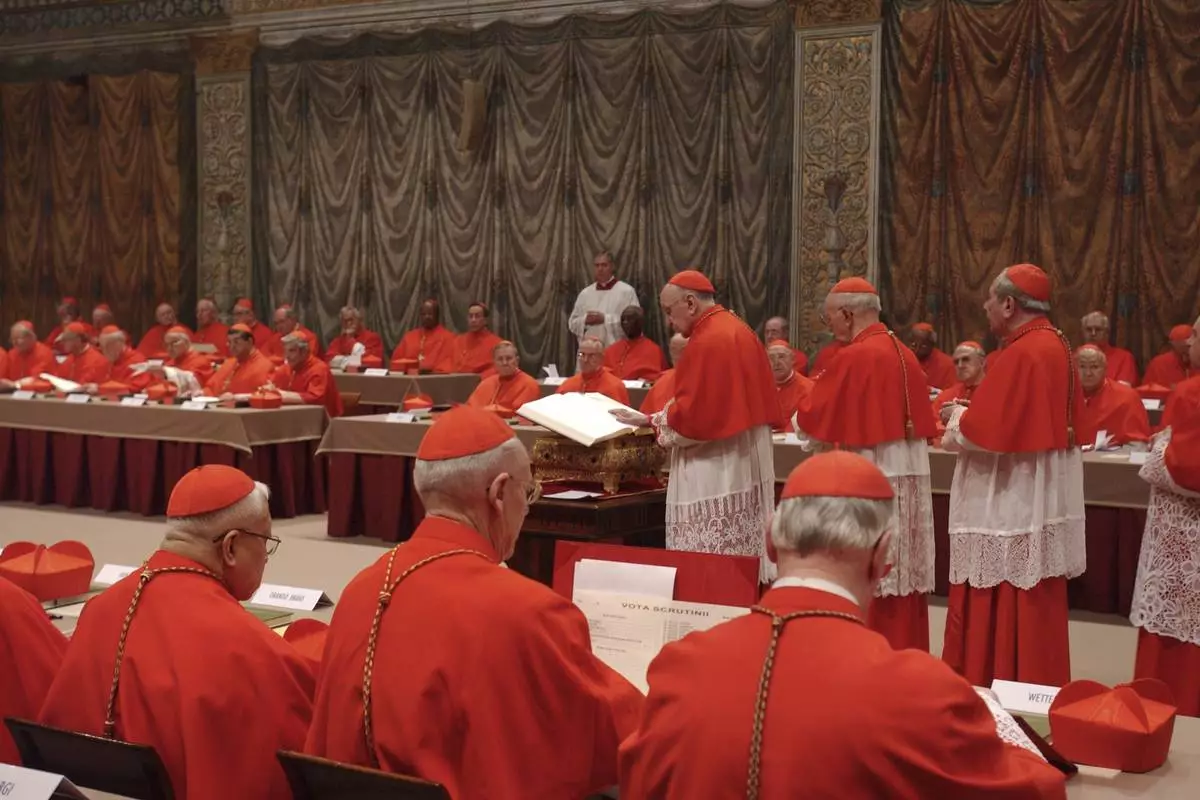
FILE - Italian Cardinal Giacomo Biffi, center, takes an oath at the beginning of the conclave to elect the next pope in the Sistine Chapel at the Vatican, Monday, April 18, 2005. (AP Photo/Osservatore Romano via AP, File)
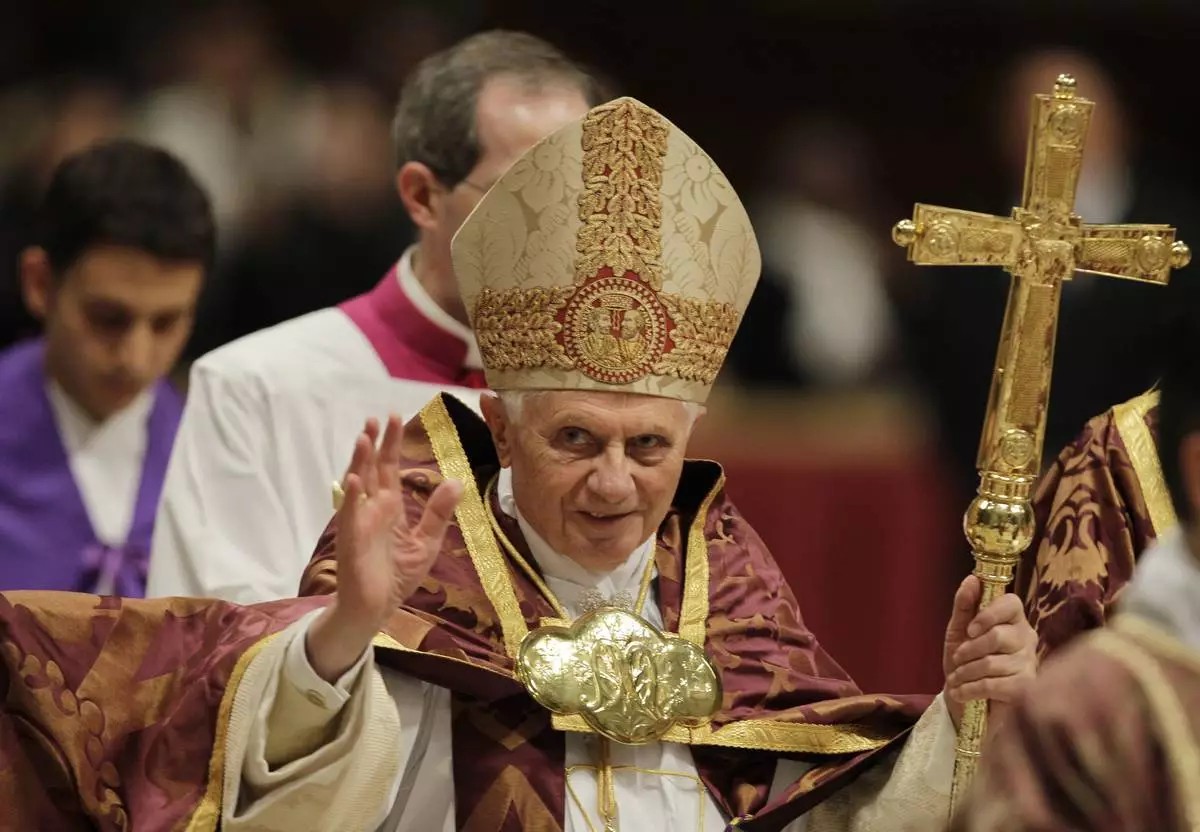
FILE - Pope Benedict XVI blesses the faithful as he arrives at St. Peter's Basilica in the Vatican, Dec. 16, 2010. (AP Photo/Alessandra Tarantino, File)
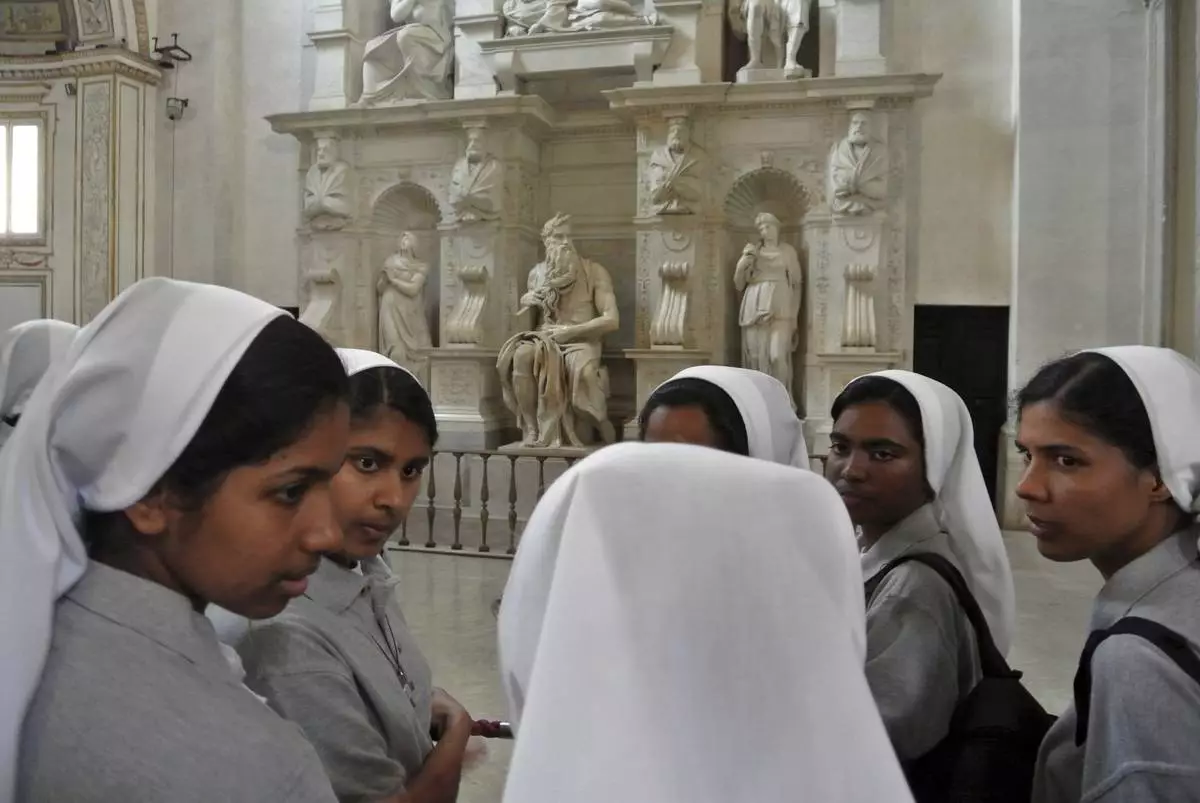
FILE - Nuns talk in front of Italian Renaissance artist Michelangelo Buonarroti's Moses statue, part of a funerary monument he designed for Pope Julius II inside San Pietro in Vincoli Basilica in Rome, July 2, 2013. (AP Photo/Gregorio Borgia, File)
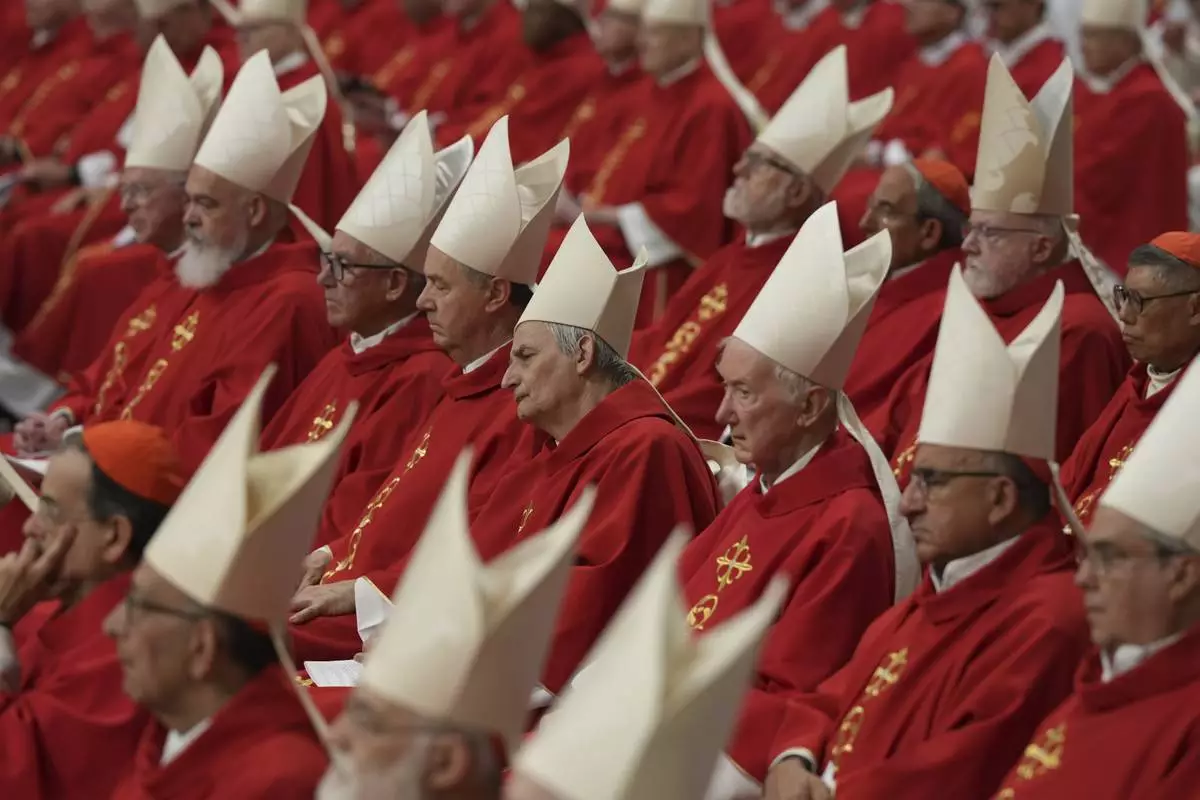
Cardinal Matteo Zuppi, centre, attends a mass on the third of nine days of mourning for late Pope Francis, in St. Peter's Basilica at the Vatican, Monday, April 28, 2025. (AP Photo/Andrew Medichini)
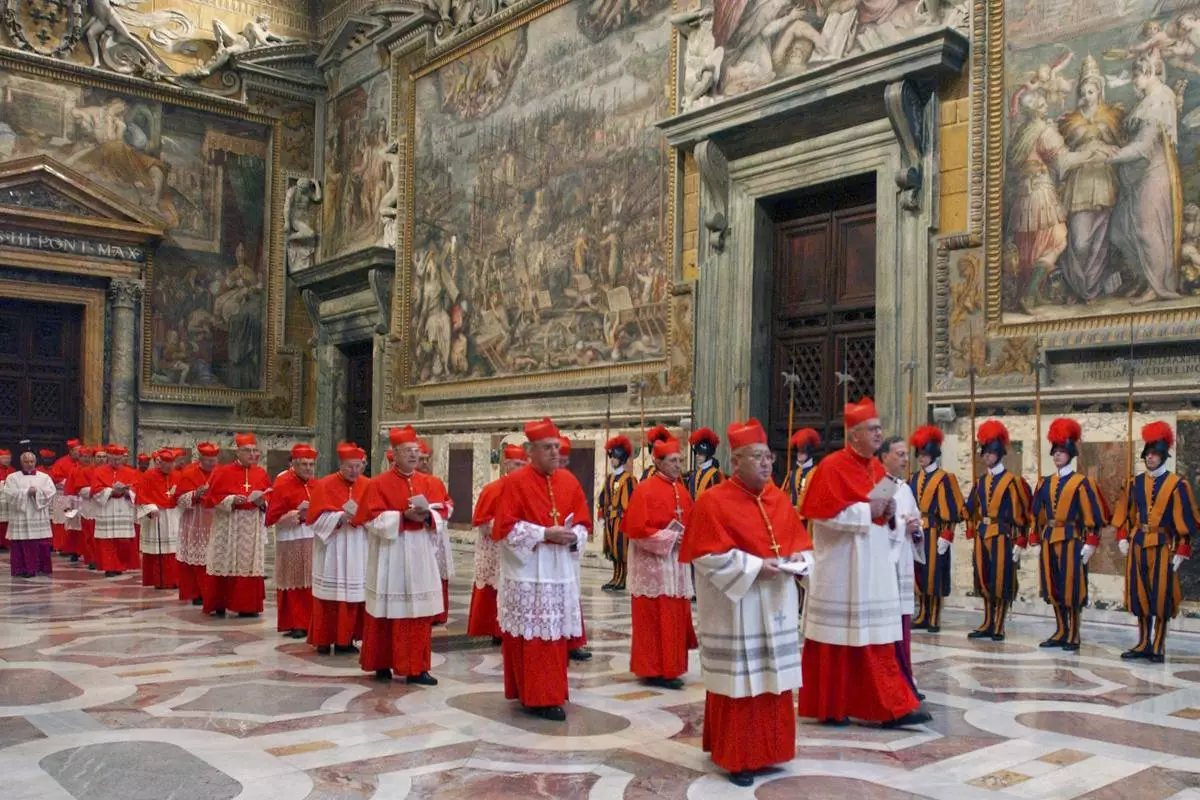
FILE - Cardinals walk in procession to the Sistine Chapel at the Vatican, at the beginning of the conclave, April 18, 2005. (Osservatore Romano via AP, File)



